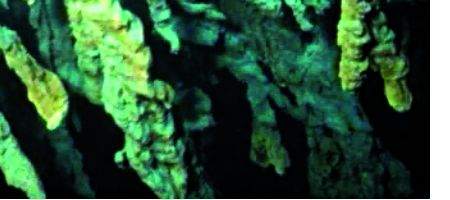The good news: scientists have discovered a completely new type of bacterium that could help with the disposal of old ships and oil rigs. The bad news: it’s eating the Titanic.

The new bacterial species was collected from a ‘rusticle’ on the RMS Titanic, 3.8 km below the ocean surface. It’s been named Halomonas titanicae by the scientists, from Canada’s Dalhousie University and the University of Sevilla in Spain.
The team tested the rusting ability of the bacterium, and found that it could stick to steel surfaces, creating knob-like mounds of corrosion products.
A similar bacterial corrosive process is thought to be responsible for the formation of the rusticles themselves – resembling rusty icicles – which cover the ship’s hull.
While these look like solid structures, they are highly porous and support a complex variety of bacteria. The implications is that H. titanicae may work in conjunction with other organisms to speed up the corrosion of the metal.
The RMS Titanic was made up of 50,000 tons of iron and has been progressively falling apart for the past 98 years.
“We believe H. titanicae plays a part in the recycling of iron structures at certain depths,” say Dr Bhavleen Kaur and Dr Henrietta Mann from Dalhousie University.
“This could be useful in the disposal of old naval and merchant ships and oil rigs that have been cleaned of toxins and oil-based products and then sunk in the deep ocean.”
The authors say they don’t yet know whether the bacteria arrived aboard the RMS Titanic before or after it sank. It’s possible, they say, that these bacteria could cause similar damage to offshore oil and gas pipelines.
“Finding answers to these questions will not only better our understanding of our oceans, but may also equip us to devise coatings that can prevent similar deterioration to other metal structures,” they say.






